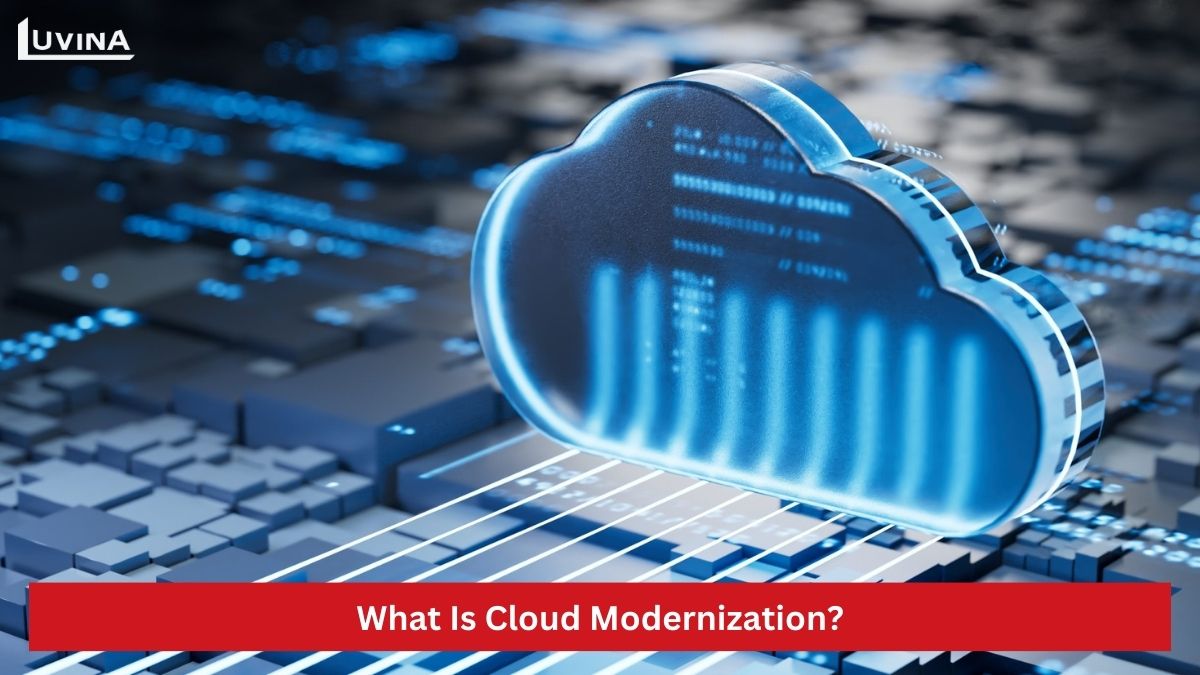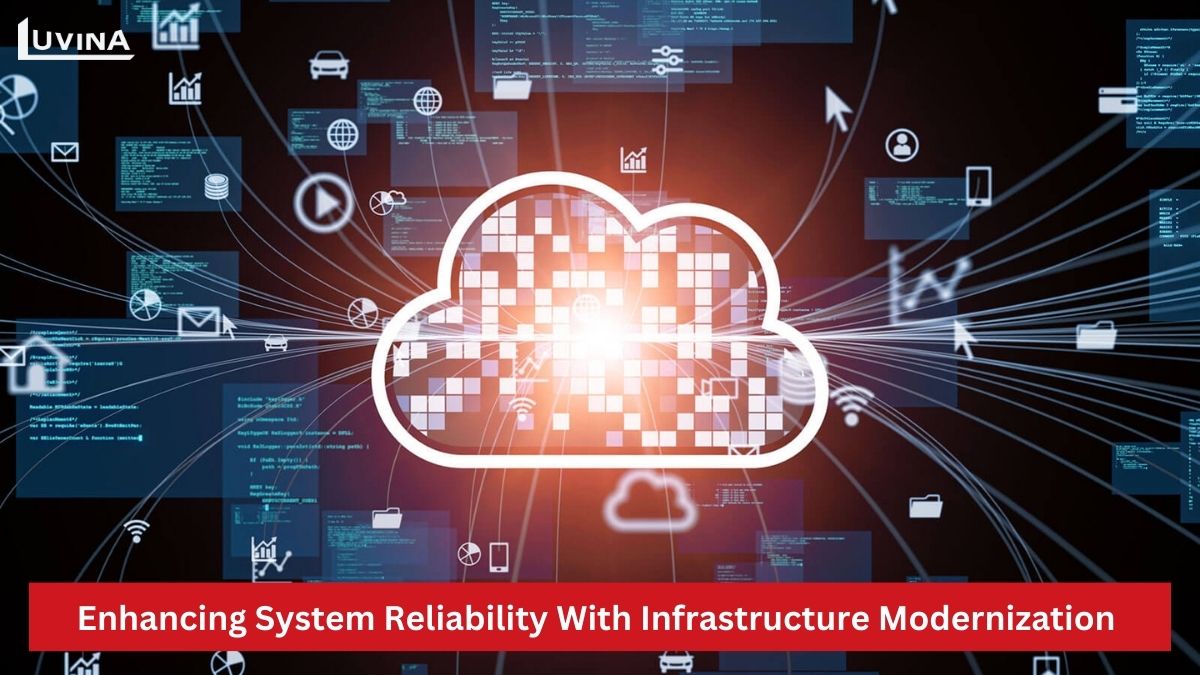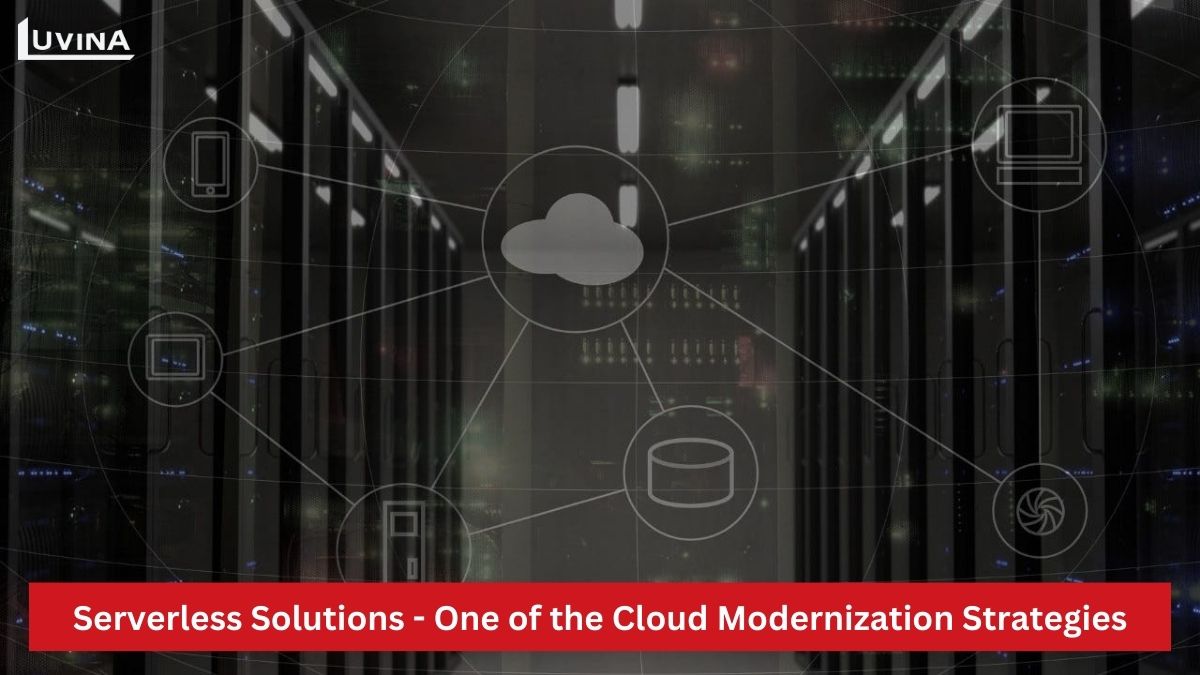With the full potential of cloud technology at hand, cloud modernization is seen as a revolutionary strategy for businesses in the digital age. Building a thoughtful cloud modernization strategy can help companies innovate rapidly and succeed. To better understand this topic, let’s explore the benefits and challenges businesses may encounter during the cloud modernization process, along with some tips for crafting the most effective strategy.
What is Cloud Modernization?
Cloud modernization is the process of migrating, updating, and transforming an organization’s on-premises infrastructure and data sources into a cloud-based architecture and environment.

For example, a healthcare service provider operates inefficiently due to underutilization of technology for Electronic Health Records (EHR) or advanced health data analytics. Upon migrating their systems to the cloud, cloud services such as EHR and data analytics have enabled this healthcare provider (and their patients) to access detailed information, including medical history, personal information, medication history, and more.
Benefits of cloud modernization
A well-executed cloud modernization strategy can bring numerous benefits to businesses, including:
- Improved business flexibility: Rapid and less error-prone deployment of new applications enhances operational agility.
- Increased employee productivity: Automation replaces manual processes, allowing employees to reduce administrative tasks and focus on specialized work.
- Cost optimization: Leveraging diverse and high-quality application features at reasonable costs.
Additionally, cloud modernization helps businesses scale, innovate, strengthen security, and maintain compliance.
Cloud modernization challenges
To ensure a smooth cloud modernization process, businesses need to understand the challenges they may face. Some of these challenges include:

- Developing a cloud modernization strategy: This is one of the biggest challenges. Developing a strategy involves understanding what the business aims to achieve by moving its workload to the cloud, and assessing how this transition will impact infrastructure, processes, and current staff.
- Business process disruptions can occur during cloud modernization when infrastructure architecture and applications are inconsistent, potentially causing applications to cease functioning.
- Skill shortage: Organizations and businesses need teams equipped with the necessary skills to execute cloud modernization processes. Without these skills, projects are prone to delays.
- Cost overruns: Cloud modernization processes can easily lead to cost overruns as workloads increase, and so do costs.
- Change management strategy: Cloud modernization alters how personnel work, necessitating a plan for staff to adapt to new processes and governance rules.
4 Key Elements of Cloud Modernization Strategy
A cloud modernization strategy can be seen as a comprehensive roadmap that includes organizational alignment, data migration, workload optimization, and resource management post-migration. Within this strategy, businesses need to consider four elements: application modernization, infrastructure modernization, data modernization, and platform modernization to address all aspects of the cloud environment, ensuring a holistic, efficient, and suitable modernization strategy.
1. Application Modernization
This is the process of redesigning or rewriting existing applications to become native to the cloud, fully utilizing the capabilities of the cloud platform. Application modernization focuses on applying platform-as-a-service (PaaS) solutions to modernize applications.
In some cases, application modernization involves moving to a new cloud environment. This migration process can be approached through the 7R strategy (rehosting, relocating, re-platforming, refactoring, repurchasing, retaining, and retiring applications and data), with the simplest being rehosting, where data is stored and moved to the cloud without altering the architecture or code. The strategy chosen for modernizing and migrating applications depends on the complexity of the original application, the timeline, and the budget available.
2. Infrastructure Modernization
Infrastructure modernization is utilizing Infrastructure as a Service (IaaS) to replicate existing infrastructure in the cloud or restructure infrastructure using native cloud services. Infrastructure modernization is a way to enhance system reliability and reduce downtime by minimizing manual errors. The infrastructure needs to be flexible, leveraging the best services from various providers while ensuring consistency. It should also automatically scale up or down based on demand to optimize performance and save costs.

3. Data Modernization
Data modernization contributes significantly to cloud modernization by leveraging the organization’s original databases on the cloud platform. For example:
- – Facilitating informed decision-making based on stored and analyzed data.
- – Rational data management, organizing data by importance.
- – Minimizing data loss risks.
- – Ensuring compliance with data regulations and standards.
4. Platform Modernization
Platform modernization involves tasks such as selecting service platforms, managing APIs, and implementing mesh technologies. These tasks help developers focus on application development rather than infrastructure management, reducing complexity and infrastructure maintenance costs. They also enhance seamless integration between systems and applications, while improving security and reliability.
Cloud modernization strategies
When developing a cloud modernization strategy, it’s crucial to leverage cloud-native capabilities, maximize automation, and streamline cloud applications. Additionally, consider these fundamental principles to safeguard your cloud environment:
1. Containerizing your software
Containerizing your software involves packaging applications into lightweight, self-contained units known as containers, which offer scalability, portability, and fault tolerance. Docker, a leading containerization tool, has been instrumental in this paradigm shift. Major cloud providers like AWS offer services such as ECS, EKS, and Fargate for container orchestration, enabling rapid development, deployment, and scaling of applications. Modernizing with containers involves strategies to refactor legacy apps, manage microservices, and optimize scalability.
2. Utilizing serverless solutions
Utilizing serverless solutions involves adopting a computing model where applications are developed and executed without the need to directly manage the underlying infrastructure. This approach is well-suited for handling tasks that are triggered by events and require short durations of execution, especially for workloads with irregular or unpredictable traffic patterns.

Serverless platforms such as AWS Lambda, Fargate, and API Gateway integrate seamlessly with cloud services, allowing developers to focus on application development rather than infrastructure setup. While serverless offers scalability and reduces operational complexities, its applicability varies across different modernization projects, necessitating careful consideration of design strategies, security measures, and operational best practices to ensure optimal outcomes.
3. Cloud lift-and-shift strategy
This strategy involves migrating your applications to the cloud platform without altering them. Its advantages include speed and cost-effectiveness, making it a great option for businesses looking to quickly adopt cloud services without being ready for major changes.
4. Technical upgrade
To optimize operating systems and databases in the cloud, you’ll need to modernize your existing systems. This process can be phased in to allow simultaneous upgrades and cloud feature utilization without disrupting business operations.
5. Application refactoring
Cloud modernization allows for a completely new set of tools for your business. You’ll need to transform existing applications to better fit the cloud environment. This strategy is crucial for businesses aiming to stay ahead of trends.
6. DevOps strategy
DevOps combines teamwork and technology to bring software development and operations closer together. It focuses on automating tasks like security and testing early in the development process. By giving developers better tools to see how their software is doing and making security a top priority, DevOps helps create better and faster software.
7. Monitoring cloud applications and services
This cloud modernization strategy includes collecting data on things like CPU use and response times. It helps teams catch problems before they affect users, letting them fix things quickly if something goes wrong. Tools like alerts, dashboards, and analyzing logs are important for this.
8. Cost optimization
Saving money on cloud services involves finding ways to use them more efficiently. This includes not paying for things you’re not using, adjusting how much you’re using based on your needs and making sure you’re using the right amount of computing power. It also means finding cheaper ways to store data and using managed database services to cut costs compared to traditional software licenses.

What are the Best Practices for Cloud Modernization?
To ensure a smooth cloud modernization process, you need to follow some best practices. Here are ways to minimize errors, save time, and reduce costs during this transformation:
- Accurate assessment and prioritization: Start by thoroughly assessing all applications and data, then prioritize them based on their importance for modernization.
- Selecting the right cloud strategy: Understand your needs after moving all applications to the cloud and consider the impacts of these changes on workflows and personnel to plan accordingly.
- Developing cloud management framework: Provide clear guidelines, define roles and responsibilities for all activities, and implement top-notch security measures to safeguard data.
- Continuous monitoring and resource optimization: Cloud environments are dynamic, so continuously monitor applications to update and adjust them as needed.
- Choosing a suitable cloud service provider: To select the right cloud service provider, consider factors like reliability, scalability, security capabilities, and budget.
- Phased modernization: Even with a detailed and fitting cloud modernization strategy in hand, it’s advisable to implement the modernization process in stages to minimize risks and avoid disrupting business operations.
- Employee training: Invest in training your staff to effectively manage and operate cloud-based platforms, ensuring they can handle tasks efficiently and troubleshoot issues.
Differences between Cloud Modernization and Migration
The terms “cloud modernization” and “cloud migration” are often used interchangeably and can be carried out simultaneously. However, they are 2 different concepts.
Below is a detailed comparison table to help you understand and distinguish these 2 terms:
| Cloud modernization | Cloud migration | |
| Definition | Updating and transforming existing applications, infrastructure, data, and workloads to fit the cloud environment and leverage the potential of cloud technology. | Moving data, and applications from on-premises to cloud environments or between cloud environments. |
| Complexity | More complex, causing significant changes in the architecture and operation of applications. | Simpler. |
| Purpose | Making fundamental changes to improve performance. | Moving existing systems to the cloud with minimal disruption to work. |
| Approaches | Significant architectural changes to fully utilize cloud benefits. Example approaches: Re-architecting, rebuilding, and replacing. | Small architectural changes, just enough to move to the cloud. Example approaches: Lift and shift, replatforming, and refactoring. |
| Outcome | Improves performance, scalability, and security, and leverages new cloud features in the long term. | Improves functionality and performance in the cloud setting, saves costs, and increases flexibility with immediate cloud infrastructure benefits. |
Choosing between cloud modernization or cloud migration depends on the return on investment each process brings. Cloud migration is suitable for organizations needing to quickly move a large volume of work to the cloud with minimal disruption. On the other hand, cloud and data modernization is ideal for those looking to optimize applications to improve performance, scalability, and cost efficiency.
In some cases, businesses may combine modernization of the cloud with cloud migration. This involves moving existing applications to the cloud while modernizing certain components to fully leverage cloud technology’s potential.
How can Luvina help?
One of the most crucial tasks in a cloud modernization strategy is selecting the right partner to carry out modernization projects. Choosing a partner with the right capabilities ensures that your specific needs and goals are met.
If your organization is planning a cloud modernization project to enhance performance and fully utilize the cloud environment’s potential, Luvina is a reputable and reliable partner. We have over 750 IT experts with expertise in various cloud platforms, understanding the service features and best practices of each platform. With this specialized knowledge, the Luvina team will help design, deploy, and manage effective cloud-based solutions on major cloud platforms like AWS, Microsoft Azure, and more.

Additionally, we have a strong foundation in DevOps, with a thorough understanding of continuous integration, continuous deployment, and automated testing. With our experience and proven track record in similar projects across various industries, Luvina is confident in our ability to tailor solutions to meet the specific requirements of each project.
Contact us now and share your needs for your cloud modernization project. We will provide the most innovative solutions, customized to meet the unique needs of your business.









Read More From Us?
Sign up for our newsletter
Read More From Us?
Sign up for our newsletter